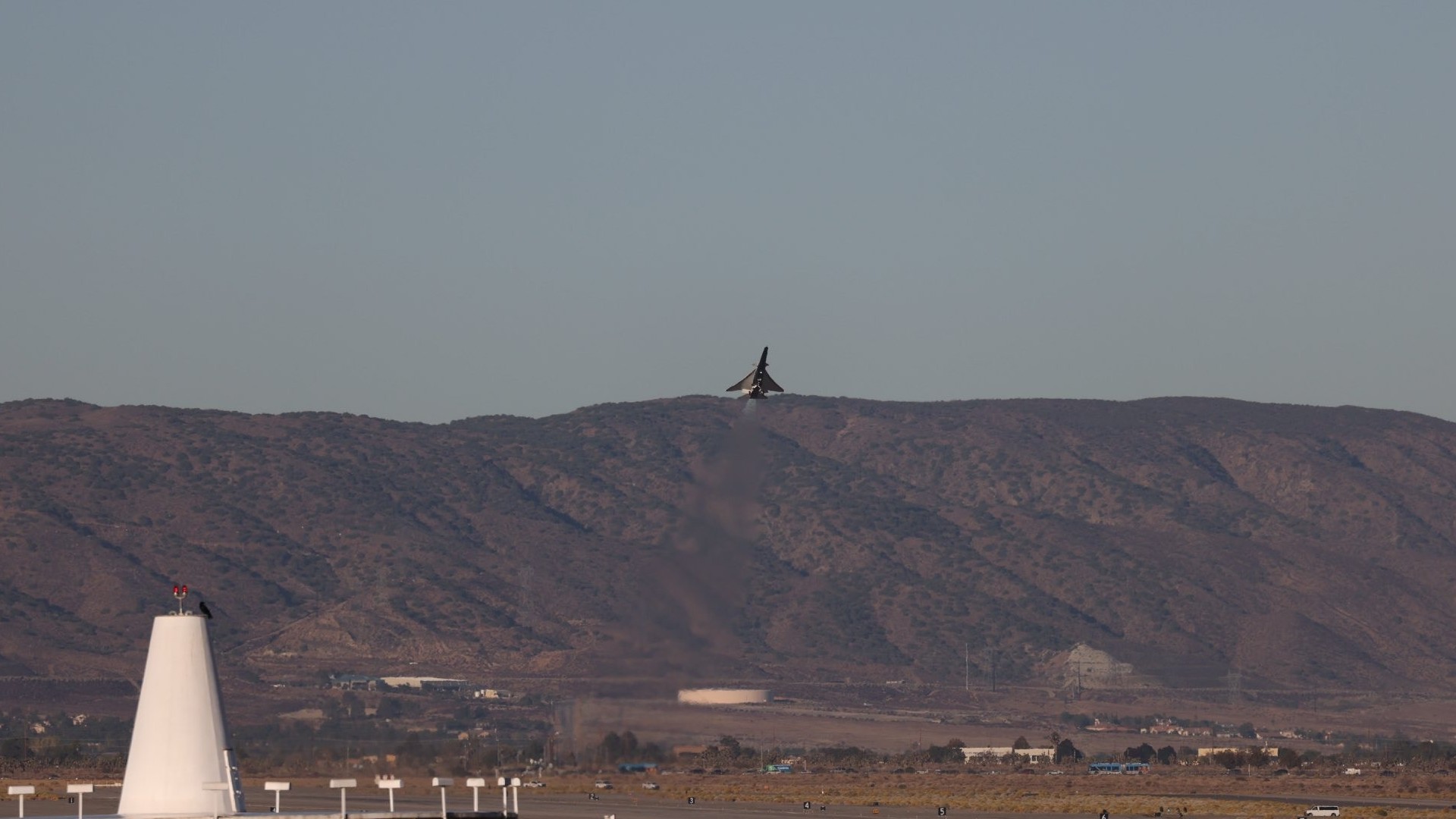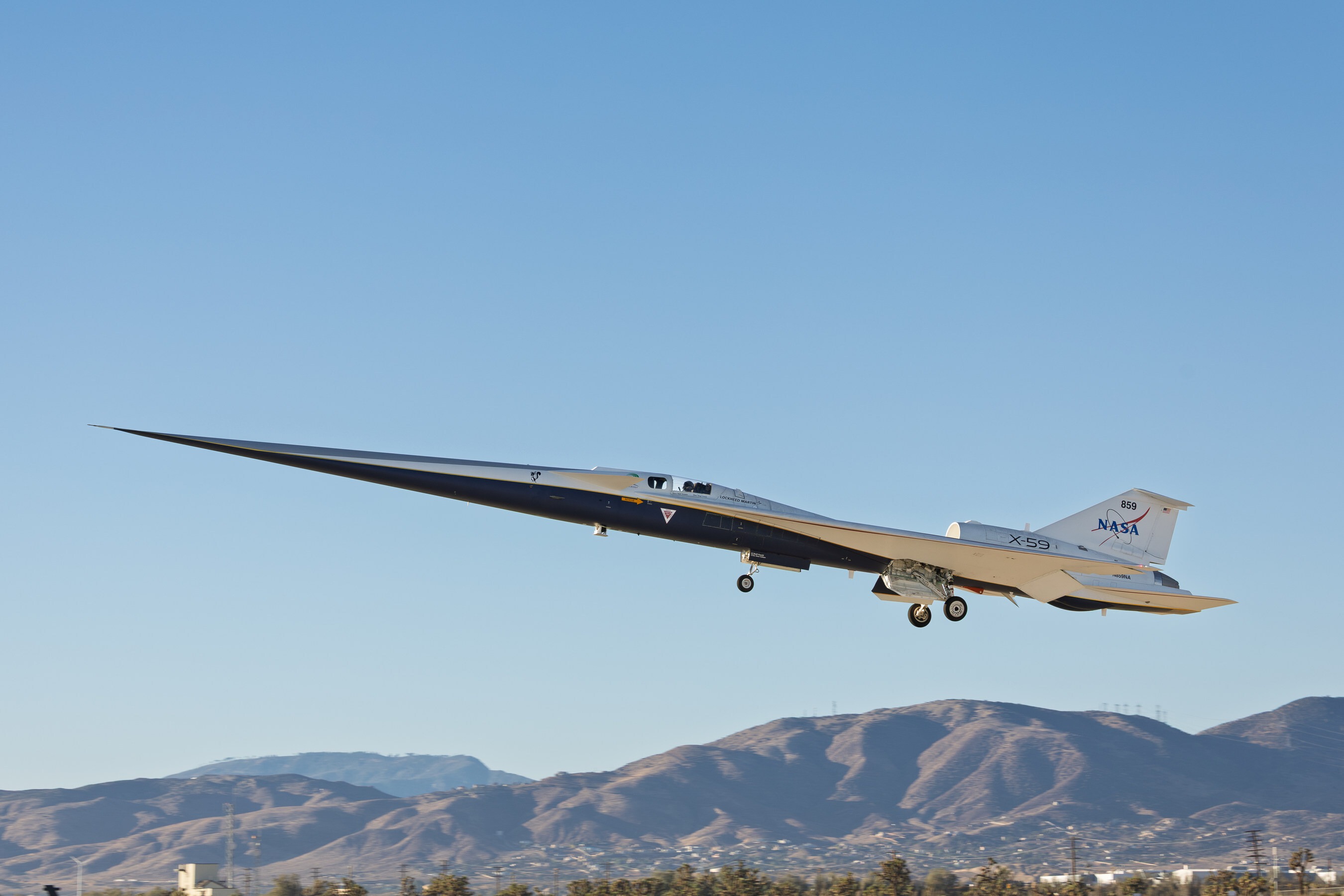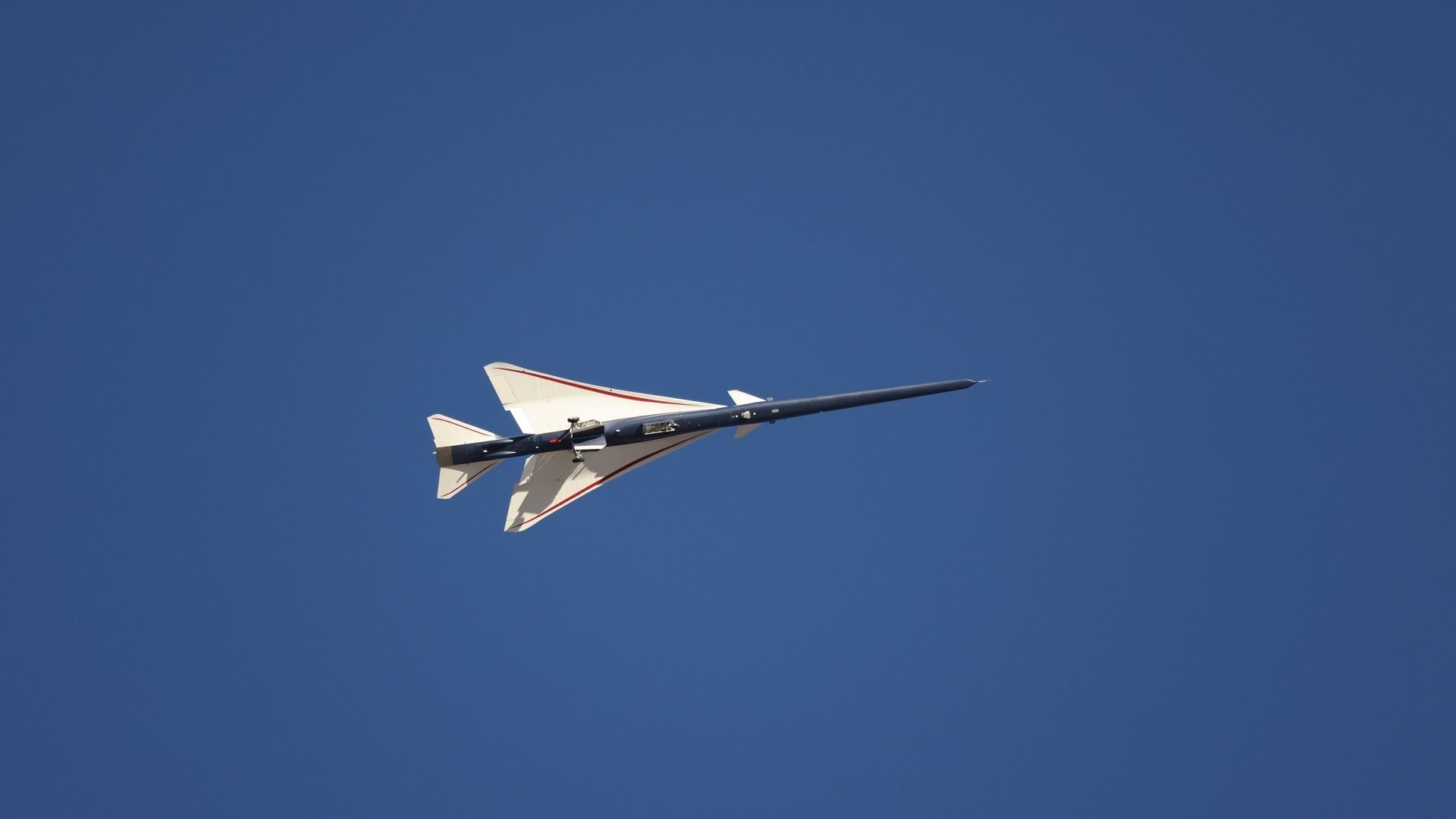NASA's X-59 'quiet' supersonic jet makes historic 1st flight (photos)
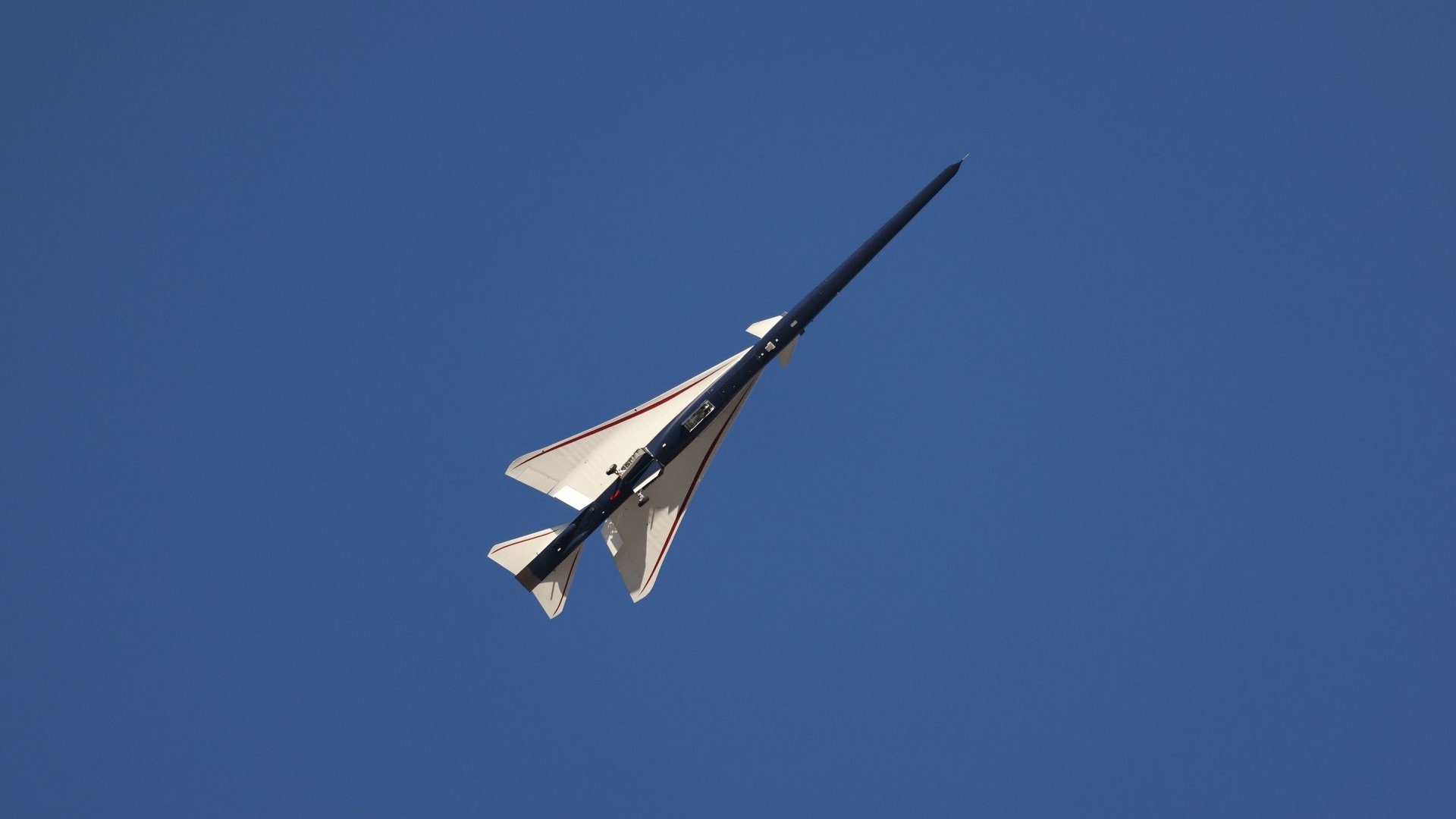
NASA's X-59 has finally taken flight.
The X-59 is NASA's experimental new jet built to break the sound barrier without generating the thunderous sonic booms typically associated with supersonic flight.
After taxiing out of the U.S. Air Force's (USAF) Plant 42 facility, the X-59 took off from the Palmdale Regional Airport in California today (Oct. 28) at 10:13 a.m. EDT (1413 GMT), according to aircraft tracker Flightradar24. The airport and USAF facility share a runway.
X-59 unrestricted climb! pic.twitter.com/8vzeMZJoqmOctober 28, 2025
Videos and photos were posted to social media by aircraft spotters and photographers, showing the radically elongated X-59 taking off before flying north out of Palmdale. Photographer Jarod Hamilton caught the X-59 as it left the ground, making a steep climb into the air above the Mojave Desert.
NASA did not announce the flight publicly ahead of time. Following the flight, acting NASA administrator Sean Duffy praised the test flight in a Lockheed Martin statement. The X-59 was designed by NASA and built by Lockheed Martin at the company's storied Skunk Works facility in Palmdale.
"X-59 is a symbol of American ingenuity. The American spirit knows no bounds. It's part of our DNA – the desire to go farther, faster, and even quieter than anyone has ever gone before," Duffy said. "This work sustains America's place as the leader in aviation and has the potential to change the way the public flies."
Lockheed Martin's statement adds that the X-59 "performed exactly as planned" during its first flight.
Breaking space news, the latest updates on rocket launches, skywatching events and more!
Based on the X-59's track, it appears the X-plane flew oval-shaped "racetrack" patterns over the U.S. Air Force's Edwards Air Force Base for just over an hour before landing at the facility.
NASA's Armstrong Flight Research Center is located at the base. After this first flight, the X-59 will now reside at Armstrong, where it will undergo a testing campaign that will involve flying the jet over microphones placed throughout the desert and trailing other aircraft equipped with special air sensors through its shockwaves .
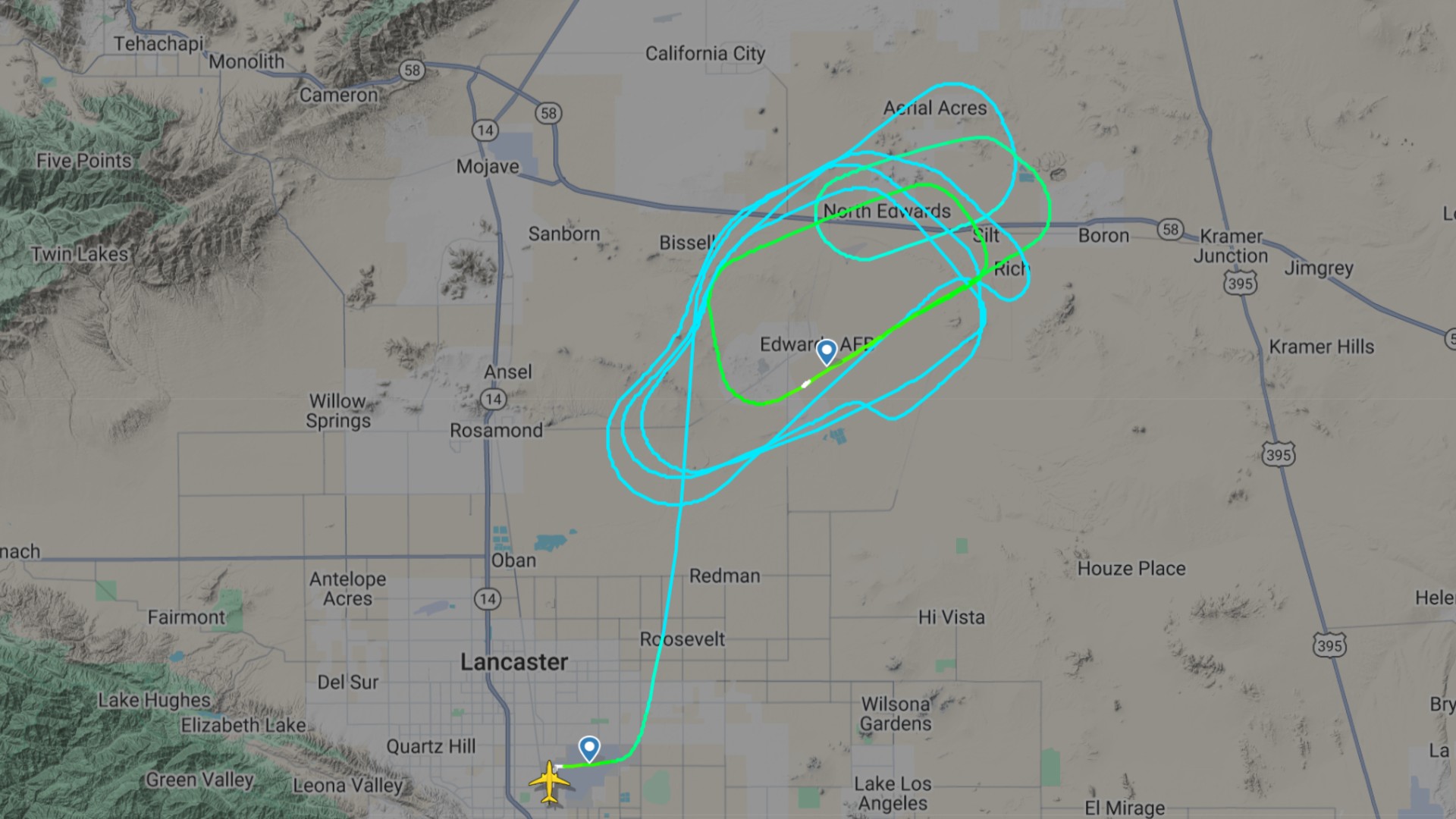
The X-59 was designed from the wheels up to be able to fly faster than the speed of sound without producing loud sonic booms, which can be disruptive to people on the ground below. Because of those booms, supersonic flight has been prohibited above land within a certain distance of the U.S. since 1973.
But NASA hopes to change that. If the X-59 can prove that "quiet" supersonic flight is possible, the restrictions on breaking the sound barrier above the populated U.S. could someday be lifted, allowing commercial supersonic flight. The high speeds of supersonic travel could also be a huge boon for disaster relief, medical transport and other industries.
To that end, President Trump issued an Executive Order earlier this year instructing the Federal Aviation Administration (FAA) to begin taking steps to repeal the prohibition on supersonic flight over the United States.
Several U.S. companies are also innovating aircraft aimed at ushering in a new era of supersonic travel. In January 2025, Colorado-based Boom Supersonic's XB-1 jet broke the sound barrier for the first time, marking the first time an independently-developed commercial aircraft achieved supersonic flight over the continental United States.
Editor's note: This story was updated on Oct. 29 to include comment from acting NASA administrator Sean Duffy and Lockheed Martin.

Brett is curious about emerging aerospace technologies, alternative launch concepts, military space developments and uncrewed aircraft systems. Brett's work has appeared on Scientific American, The War Zone, Popular Science, the History Channel, Science Discovery and more. Brett has English degrees from Clemson University and the University of North Carolina at Charlotte. In his free time, Brett enjoys skywatching throughout the dark skies of the Appalachian mountains.
You must confirm your public display name before commenting
Please logout and then login again, you will then be prompted to enter your display name.
